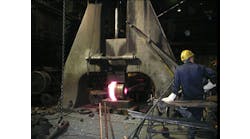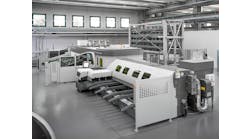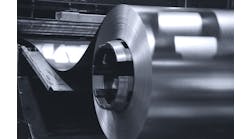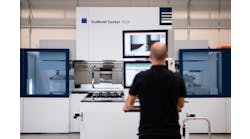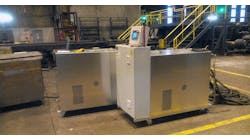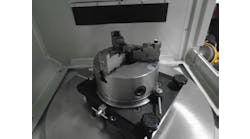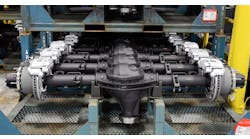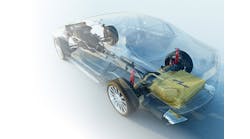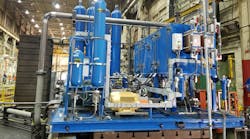As the forging industry’s most experienced maintenance staff and equipment operators retire, keeping legacy machines producing at full capacity is increasingly difficult. When new employees lack sufficient expertise and decades-old forging equipment breaks down, the result can be very costly: extended downtime.
“A seasoned team may know all the ‘ins and outs’ of every forging machine in a facility, but when workers leave or retire, the preventive maintenance can suffer and equipment like hydraulic presses eventually will begin to break down,” says Jay Raygor, Service Supervisor at Ajax-CECO-Erie Press.
“When that happens, the cost of hourly downtime can be several thousand dollars per hour.”
Raygor adds that although some customers follow routine maintenance guidelines, most keep producing products until the equipment breaks down.
“The danger with this approach is that the lead time for some major component parts can be 20 to 26 weeks,” he says.
As a solution, industry-leading OEMs like Ajax-CECO-Erie Press (ACE) are now providing forgers with a proactive “health check,” followed by an ongoing preventive maintenance (PM) program designed to sustain peak performance of equipment that may be many decades old.
ACE is the largest forging equipment supplier in North America. With its core brands founded in the 1800s, the company offers a full line of products, including standard mechanical forging presses, upset forging machines, forging rolls, hydraulic forging, forming, compression molding, cold extrusion, compaction, roll ring preform presses along with stretch forming and straightening machines, solid die forgers, trim presses, programmable die forgers, and custom-engineered hydraulic presses.
Time for a Health Check
As human beings age, the need for more frequent health checks is required to catch minor issues before they become serious. The same is true with forging equipment such as hydraulic presses, particularly if used for many decades.
“Some older forging machines have been in service since the 1950s and 60s, so there are legacy parts that may be obsolete. On these older machines, operators may not know how to troubleshoot an issue or even identify a worn or failing part. This increases the risk of a major breakdown,” says Raygor.
The challenge only intensifies when there is a variety of forging equipment types and brands on the same production floor. For this reason, ACE offers forgers a comprehensive program of routine health checks on many major brands including Ajax, Chambersburg, ERIE Press, and L&F (formerly Sheridan-Gray).
To perform a health check, ACE utilizes the full documentation of the equipment in its broad portfolio of brands, along with extensive maintenance and repair experience accumulated over many decades. The company’s technicians examine the equipment condition, running clearance, electrical system, pump performance, etc.
Based on the results of the health check, the OEM then suggests corrective actions to restore the equipment back to OEM specifications, along with a customized, ongoing, preventive maintenance program for hydraulic presses, along with consumables like filters, and oil sample analysis.
The extent of the PM program is based on factors such as the type of equipment, production, onsite support, and desired PM intervals. It can be scaled up or down to take into account the maintenance team’s experience, availability, and turnover. “We want to be able to fill in where the customer’s needs are,” says Raygor.
The program can serve as a teaching aid to help the forger build its maintenance team. This can not only increase the team’s self-reliance but also minimize any downtime.
“The maintenance team can shadow and assist us, and we explain what we are doing, why we are doing it, and how to proceed. Over time, they will increasingly be able to maintain the equipment themselves,” says Raygor.
He points to an example of one forger that dramatically improved its own in-house PM capability with such a learning process.
“A customer that had one of our presses did not have much of a maintenance program due to significant turnover. So, we visited annually for years, and each time walked employees through the process. Recently, when we visited, we couldn’t believe how good their PM had become,” says Raygor.
Although PM is typically performed onsite, some actions can be performed remotely. ACE can utilize advanced collaboration tools and real-time video communications to connect with technicians where both can see, discuss, annotate, and resolve many situations at hand.
To ensure the highest production uptime of forging equipment and prevent lengthy unexpected downtime, ACE offers a separate stocking program as an option.
“Consumable items common to every forging machine, like friction plates and driving plates for presses and upsetters, or piston heads, rods, rings, and packings for hammers, are often stocked.
However, it's even more important to stock key items such as main gears, eccentric shafts, and rams to avoid long lead times for replacement,” says Raygor.
He notes that in the stocking program, the customer pays a percentage of the cost and then the balance when they take possession of the part—even if 2 to 3 years later. A custom stocking program with minimal up-front investment can eliminate months of downtime due to long lead time parts.
To ensure the performance, consistency, and reliability of forging equipment, routine inspection, and preventive maintenance have always been essential. When forgers find this increasingly taxing as their most experienced technicians retire, opting for periodic health checks and preventive maintenance with industry experts can be crucial to long-term productivity and quality.

